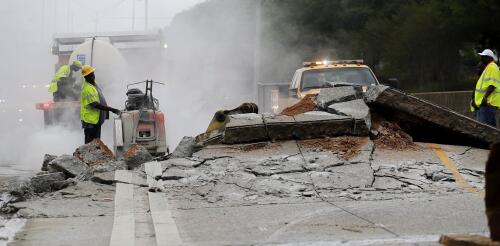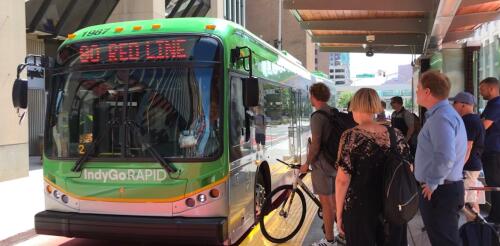Rail
Summer 2024’s record heat is creating problems for transportation infrastructure, from roads to rails. New York’s Third Avenue Bridge, which swings open for ship traffic on the Harlem River, was stuck for hours after its metal expanded in the heat and it couldn’t close. Roads have buckled on hot days in several states, including Washington and Wisconsin. Amtrak warned passengers to prepare for heat-related problems hours before a daylong outage between New York and New Jersey; the risks to power lines and rails during high temperatures are a growing source of delays for the train system. It doesn’t help that the worsening heat is hitting a U.S. infrastructure system that’s already in trouble. The American Society of Civil Engineers gave U.S. infrastructure an overall grade of C- in its latest national Infrastructure Report Card, released in 2021. While there has been some improvement – about 7.5% of U.S. bridges were in poor condition, compar...
Public transit in the U.S. is in a sorry state – aging, underfunded and losing riders, especially since the COVID-19 pandemic. Many proposed solutions focus on new technologies, like self-driving cars and flying taxis. But as a researcher in urban policy and planning, I see more near-term promise in a mode that’s been around for a century: the city bus. Today, buses in many parts of the U.S. are old and don’t run often enough or serve all the places where people need to go. But this doesn’t reflect the bus’s true capability. Instead, as I see it, it’s the result of cities, states and federal leaders failing to subsidize a quality public service. As I show in my new book, “The Great American Transit Disaster: A Century of Austerity, Auto-Centric Planning, and White Flight,” few U.S. politicians have focused on bus riders’ experiences over the past half-century. And many executives have lavished precious federal capital doll...
Less than two weeks after train cars filled with hazardous chemicals derailed in Ohio and caught fire, a truck carrying nitric acid crashed on a major highway outside Tucson, Arizona, killing the driver and releasing toxic chemicals into the air. The Arizona hazmat disaster shut down Interstate 10, a major cross-country highway, and forced evacuations in surrounding neighborhoods. But the highway crash didn’t draw national attention the way the train derailment did, or trigger a flood of calls for more trucking regulation like the U.S. is seeing for train regulation. Truck crashes tend to be local and less dramatic than a pile of derailed train cars on fire, even if they’re deadlier. In fact, federal data shows that rail has had far fewer incidents, deaths and damage when moving hazardous materials in the U.S. than trucks. After the train derailment and fire in East Palestine, Ohio, on Feb. 3, 2023, the U.S. EPA tested ove...


